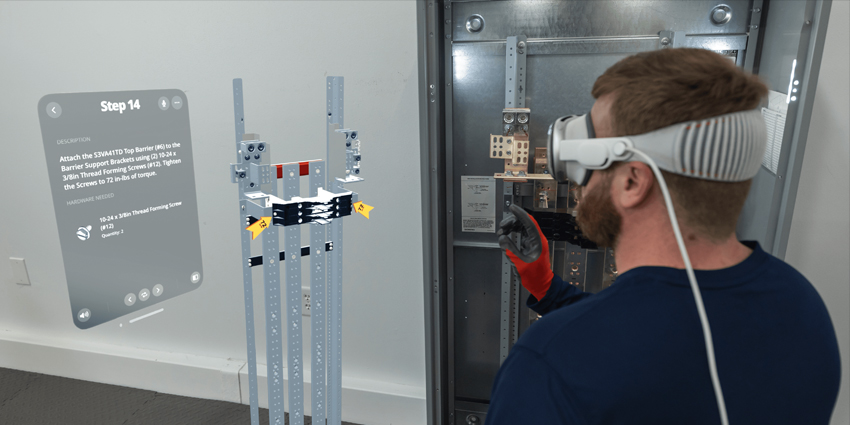As Extended Reality (XR) technologies evolve and become increasingly popular, business leaders and developers must search for new ways to create and share immersive content. RT3D engines have emerged as one of the most valuable tools for designing immersive AR/MR/VR experiences.
Defined as graphical tools capable of generating interactive content at a speed faster than human beings can perceive, RT3D engines could be the future of AR, VR, and MR.
With the correct RT3D engine, business leaders can create digital twins of real-life products, design hyper-realistic avatars, and create immersive environments. Not only do these tools enhance the visuals available within immersive content, but they deliver better interactivity too.
With a powerful RT3D engine, companies could build digital representations of assets which look, behave, and act just like the physical twin. The challenge for today’s developers and market leaders lies in choosing the correct engine.
Step 1: Define the Elements of RT3D
A guide’s first step in comparing RT3D Engines is understanding what these tools can actually do.
RT3D engines optimize content processing times, allowing for hyperrealistic animations and visuals within intensive XR workflows. Essentially, the engine is a software package built for simulating interactive or passive RT3D experiences. These solutions work by integrating various types of existing content in the form of metadata and 3D geometry.
To get the most out of RT3D engines, companies must ensure the software can leverage and optimize available content. One area where RT3D has grown particularly important is the manufacturing and industrial landscape.
These companies already leverage various tools crucial to RT3D workflows, such as 3D modelling meshes, CAD (Computer Aided Design) models, and Building Information Modelling (BIM) data. Ensuring the RT3D engine can integrate seamlessly with these tools would be crucial to generating excellent results in the AEC space.
Step 2: A Guide to RT3D Use Cases
Once a company understands the potential of RT3D engines, the next step is developing a strategy based on specific goals and use cases. The potential applications for RT3D technology are incredibly varied. For instance, AEC companies have already begun adopting RT3D engines to design blueprints, allowing immersive building plan reviews.
RT3D can help gather stakeholder feedback, allowing companies to design an immersive 3D environment where investors can interact with the digital twins of products, services, and even structures yet to be built. Other potential use cases include:
- Collaborative design: RT3D solutions can help to bring team members together throughout the globe for a more collaborative design experience. Various users can work on 3D models at the same time, gather instant feedback, and visualize outcomes.
- Simulation: Via simulation, it’s possible to use RT3D engines to reduce risks and challenges in various environments. For instance, FundamentalVR gives students training simulations that recreate real-world procedures in healthcare.
- Training: RT3D engines allow designers to create interactive 3D models of complex tools and scenarios, which are ideal for educational content. Users can implement VR or AR-based training scenarios into an onboarding experience for employees to ensure they know how to avoid common risks in their specific workplace.
Step 3: Consider Ease of Use
Like many of the technical aspects of the XR landscape, RT3D solutions do require some technical expertise and specialist training to leverage correctly.
However, some vendors in the market today are committed to making this technology as streamlined as possible. For example, to ensure the best visual quality and experience when deploying 3D content, companies need to ensure their designs are effectively optimized for various scenarios.
Unity, one of the market leaders in RT3D technology, has a comprehensive kit intended to assist businesses and developers in this optimization process. One-click solutions such as Unity Reflect automatically prepare data for real-time consumption in a 3D, interactive environment. Specialist tools, like Pixyz, allow for more control when making complex 3D models more lightweight and reliable.
Moreover, industry giant Unreal opened its RT3D suite to clients outside the gaming space, giving XR solution providers access to incredibly powerful and streamlined immersive content creation tools to enhance XR delivery greatly.
Most RT3D engine providers include asset stores where companies and developers can access pre-built solutions for their RT3D creations, which also helps to enhance ease of use. Many RT3D engine vendors come with built-in libraries of available assets, with access to things like animations, audio/video snippets, environments, and user interfaces.
Step 4: Explore Elements for Interactivity
As mentioned above, RT3D Engines aren’t just software packages designed to make 3D content look good in various environments. When comparing RT3D engines, business leaders should consider how they might want to transform static images and videos into interactive experiences via suites like Unreal or Unity.
Some RT3D engines come with “interaction models” built in, which allow companies to immediately access ways of helping users connect with operational applications. Other solutions have in-depth documentation to guide users through integrating user interfaces, spatial audio, and interactivity assets.
When exploring the immersive capabilities of RT3D software, it’s worth considering how technology creates harmony with XR solutions. For example, training solutions built in RT3D Engines could be compatible with haptic feedback devices, so users can actually “feel” the objects they’re touching or their RT3D environments.
Comparing RT3D Engines a Guide
RT3D Engines are a natural evolution in using 3D assets to improve training, development, and production techniques.
As we continue to learn more about these tools, we also discover new potential use cases for them, extending beyond the AEC and manufacturing world. Also, RT3D suites extend far beyond their gaming marketplace origin.
In the years to come, RT3D engines will likely play a significant role in much of the immersive content we use.







